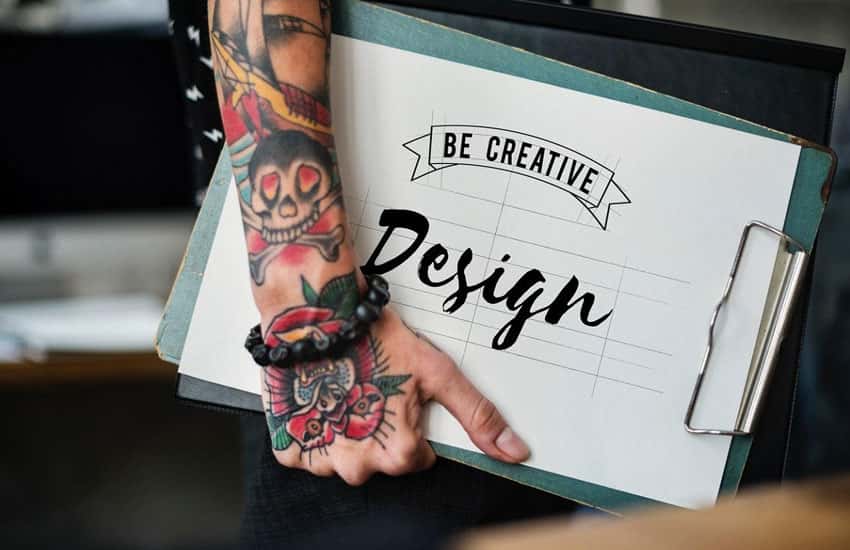A Guide to Frontend Design Trends 2024 for Your Business

Frontend design builds the first impression on the application users.
There are a lot of things that impact the design, and so the impression. Being a business owner, you must ensure that users get a “good experience” when they use the app.
According to the Harvard Business Review, customers’ loyalty increase when their problem is solved in less effort. Strategically designed websites and mobile apps can help a great deal to solve the customers’ problems in minimum efforts.
A study by Forrester Research reveals that “a well-designed user interface could raise your website’s conversion rate by up to 200%, and a better UX design could yield conversion rates up to 400%.”
Designing & Coding
As there is a technical perspective associated with front-end designing, many companies misunderstand designing with coding.
They treat HTML and CSS the same as any other programming languages like Java and Python. Yes, they are technically code but frontend UI code and “real application development” is different.
If you are planning to build a mobile or web app, then make sure you hire a mobile app or web development company that has an integrated yet dedicated frontend designing team.
And since designing is more about user-preferences and likeliness, you can provide input at every stage of the application design. But before you give your valuable input, make sure to be aware of the latest application designing trends, and what works and what not.
Also Read: How to select best front-end technologies for your project?
List of 7 Frontend Design Trends in 2024
Here is a list of 7 frontend design trends that are going to rule the market in 2024. However, before applying one to your mobile or web application, check if it matches your users’ preferences.
1. Creating Depth and Illusions
Frontend designers have been using shadows for a long while to create depth and illusions. Shadows being a staple in web design; it is widely used for increasing the versatility effect by providing emphasis.
Soft and subtle shadows, when combined with vibrant color gradients, give a three-dimensional effect to the image. It also helps users focus on the “thing” that business owners want them to focus on.
Last year, Mozilla designer advocate Jen Simmons introduced the term “Intrinsic web design.” She explains that web capabilities and tools have been enhanced to empower frontend designers to try a lot of different things.
A wide range of web layout tools enables designers to plan out the expansion and contraction of items with different sizing values.
2. Rebirth of User-Centered Design
When it comes to UI/UX design, it is essential that a web app development company give preferences to the creative abilities of the designers rather than counting on the number of years of experience.
Whereas, frontend designers should keep an open mind. Walking the straight path of aestheticization is not going to take them far.
On the other hand, business owners should support designers by providing inputs related to the preferences of the users in a particular segment.
For example, the web design of a cosmetic company and a steel production company cannot be the same. But this does not mean that a website of the production company has to be boring, filled with relatively unadorned information. Besides, the de-cluttered, clean design does not mean boring, which applies to all types of companies.
Frontend designers must come with ways to keep the design appealing while also designing it for industry-specific users. If you are planning to hire graphic designers, make sure that they have a good understanding of design concepts, knowledge of JavaScript, DOM and JQuery, and content management systems.
3. Creation of Meaningful Value
Most of the designs you will find in design galleries are meant for mass production.
And if your product is not able to create a meaningful value right at the time when the first-time users see it, then chances are they may never be able to recall what unique experience they had with your web application.
Frontend designing is not a low-value task that should be left for automated tools. You have to focus on building a system beyond design that works for your mobile or web application users.
4. Unique Authentication Pattern
The cacophony of data breaches, the release of GDPR, and trust violation by top companies have dominated the news in the technology section.
Frontend designers have to play a significant role in preventing data breaches and building trust among application users.
They can do this by creating a unique authentication pattern, which is not just a proxy to Facebook or other prominent logins but is able to mark a print as proof of truthfulness.
Through using a unique authentication pattern, at the time of sign up, users must be comfortable and be willing to engage. This can be done by asking for details of only relevant information.
Also Read: How do you choose between a website and a web application for your business?
5. Storytelling
In 2024, frontend designing will not be only a collection of CSS styles and HTML codes. It will be about meaningful and interesting storytelling. And every brand needs to have its own unique story.
It is a part of purposeful designing. Every element in the design must have an agenda, and that it should serve multiple purposes.
According to the UX designer, Anna Dahlstrom, who is writing a book on Design Storytelling, traditional storytelling is a better way to connect with audiences.
“As designers, we need to master Walt Disney’s skills of being able to get both the bigger picture and the small details right,” She advises.
Develop a character of your brand. Make this character do things, make decisions and whatever comes out in the decision, and let it reflect in the website.
Something like Nike does. They don’t just sell products; they sell aspirations, through meaningful story. Their advertisement induces “emotional branding.”
You can build a story and through designs make it more effective and inspirational.
6. Ambient Design
Ambient design simply means designs based on everyday things in surrounding that users can relate to. Relatable designs help users connect with the memories of those things they have in their mind.
By applying an ambient designing technique, front-end designers can establish a better connection with the users.
Advancement in CSS custom properties and browser capabilities provide huge scope to the designers to create impressive designs.
7. Use of UI designing Tools
If you will explore the market, you can find a number of web designing tools that could help work with all sorts of designs.
Although most of the frontend designers rely on Photoshop, which is definitely a great tool, you can look for some good alternatives as well, that make designing task easier and convenient.
Moving beyond Adobe products would be difficult though.
Some UI designing tools are gaining popularity as well, such as Figma, which is a real-time collaborative interface designing tool. Another is the Affinity Designer, which is dubbed as “Photoshop Killer” because of its adjustable, non-destructive layers.
Vaunt, Squoosh, and Flare are tools that work well and help designers save time.
Conclusion
In some job profiles, if you give more time, you can achieve more. Frontend designing is different. This approach doesn’t work here.
For web designers, they have to come up with interesting ideas, which depend on two things: how creative they can be, without ignoring users-preferences and business requirements and how efficiently they can use the tools.
- Create depth and illusions to give more layers to your design
- Keep an open mind, don’t just follow the aestheticization
- Avoid using replicable design
- Use unique authentication pattern
- Create story-based design
- Use relatable surrounding in your designs
- Move beyond Adobe and explore efficient web designing tools

